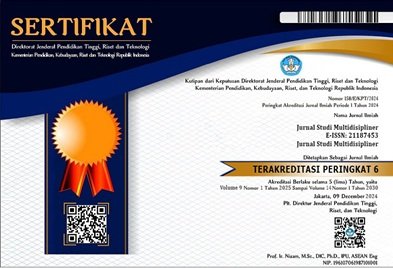ANALISIS KONSEP FISIKA PADA MESIN DRYER UNTUK PENGERINGAN GABAH
Kata Kunci:
Mesin Dryer, Pengeringan Gabah, Perpindahan Kalor, Efisiensi Energi, Fisika TerapanAbstrak
Pengeringan gabah merupakan tahap penting dalam proses pascapanen padi karena berpengaruh langsung terhadap kualitas dan daya simpan hasil. Mesin dryer hadir sebagai solusi modern untuk menggantikan metode tradisional yang tidak efisien dan tergantung pada cuaca. Artikel ini bertujuan untuk menganalisis berbagai konsep fisika yang berperan dalam sistem kerja mesin dryer, khususnya perpindahan kalor dan massa, mekanika fluida, serta sistem kontrol otomatis. Kajian dilakukan melalui studi literatur terhadap jurnal dan publikasi ilmiah terkini yang membahas penerapan prinsip fisika dalam proses pengeringan gabah. Hasil analisis menunjukkan bahwa efisiensi pengeringan dipengaruhi oleh desain alat, suhu, kecepatan udara, serta distribusi panas yang merata. Penerapan teknologi intermiten, mikrokontroler, dan model simulasi numerik seperti CFD meningkatkan efisiensi serta menjaga mutu gabah. Selain itu, penggunaan energi terbarukan seperti biomassa dan tenaga surya menjadi arah pengembangan teknologi yang ramah lingkungan. Inovasi seperti fluidized bed dryer, microwave drying, serta pemanasan frekuensi radio juga berpotensi besar untuk meningkatkan efisiensi energi dan kualitas produk. Dengan pemahaman fisika yang mendalam, pengembangan mesin dryer dapat diarahkan menuju sistem yang lebih presisi, adaptif, dan berkelanjutan.
Paddy drying is an important stage in the post-harvest process of rice because it directly affects the quality and storage life of the results. The dryer machine is present as a modern solution to replace traditional methods that are inefficient and dependent on the weather. This article aims to analyze various physics concepts that play a role in the working system of the dryer machine, especially heat and mass transfer, fluid mechanics, and automatic control systems. The study was conducted through a literature study of the latest scientific journals and publications that discuss the application of physics principles in the paddy drying process. The results of the analysis show that drying efficiency is influenced by the design of the tool, temperature, air speed, and even heat distribution. The application of intermittent technology, microcontrollers, and numerical simulation models such as CFD increases efficiency and maintains the quality of the paddy. In addition, the use of renewable energy such as biomass and solar power is the direction of environmentally friendly technology development. Innovations such as fluidized bed dryers, microwave drying, and radio frequency heating also have great potential to increase energy efficiency and product quality. With a deep understanding of physics, the development of the dryer machine can be directed towards a more precise, adaptive, and sustainable system.





